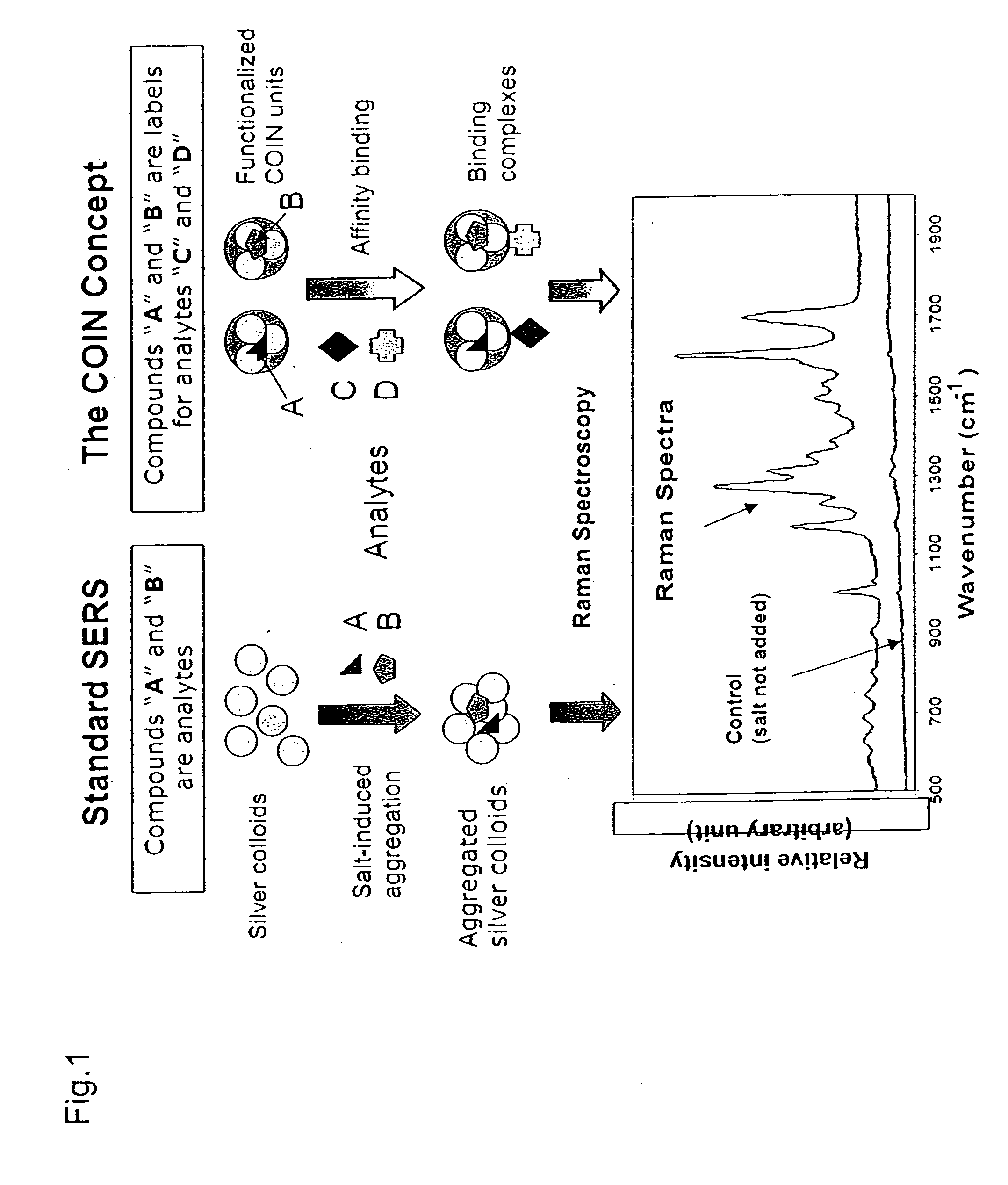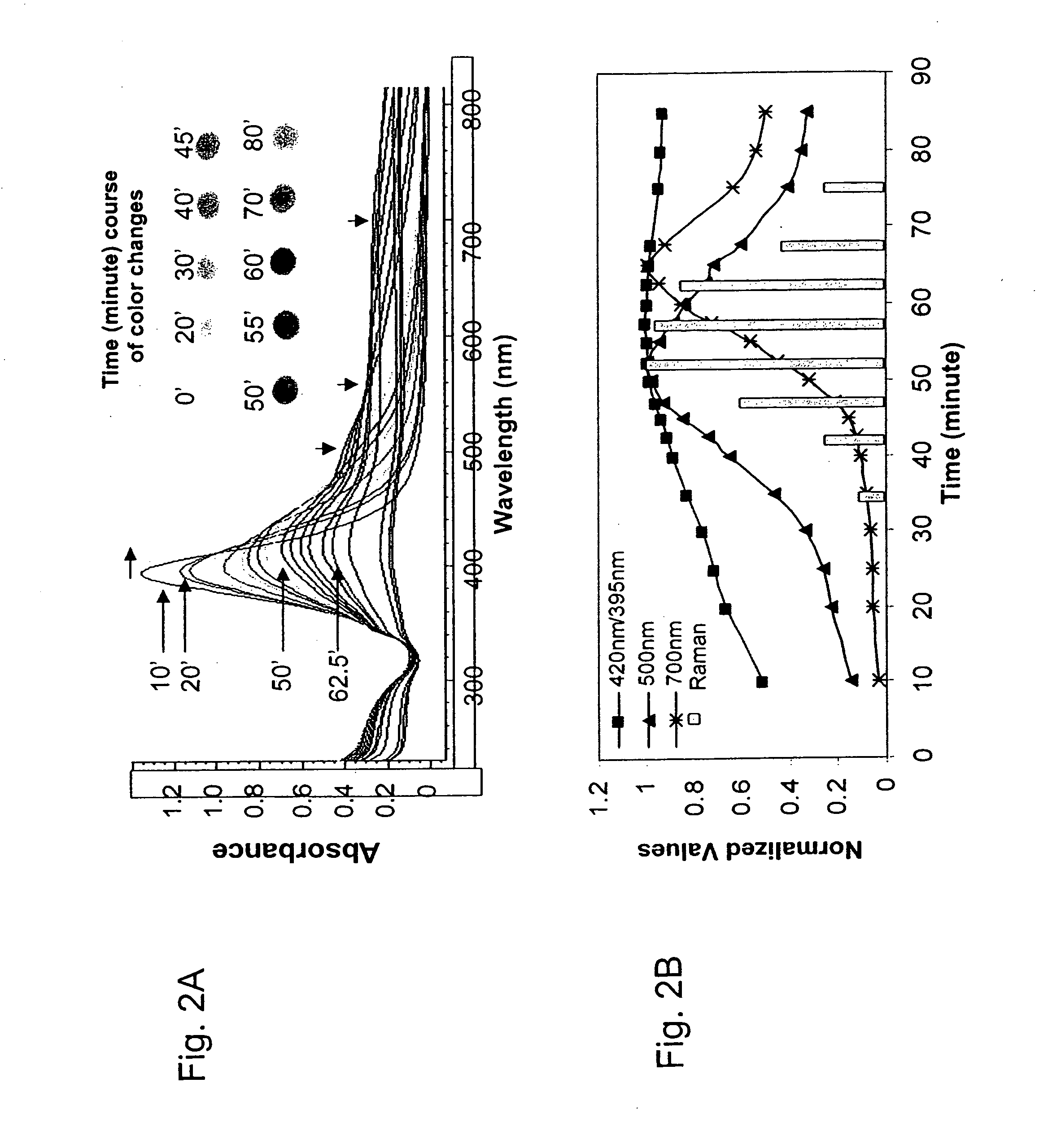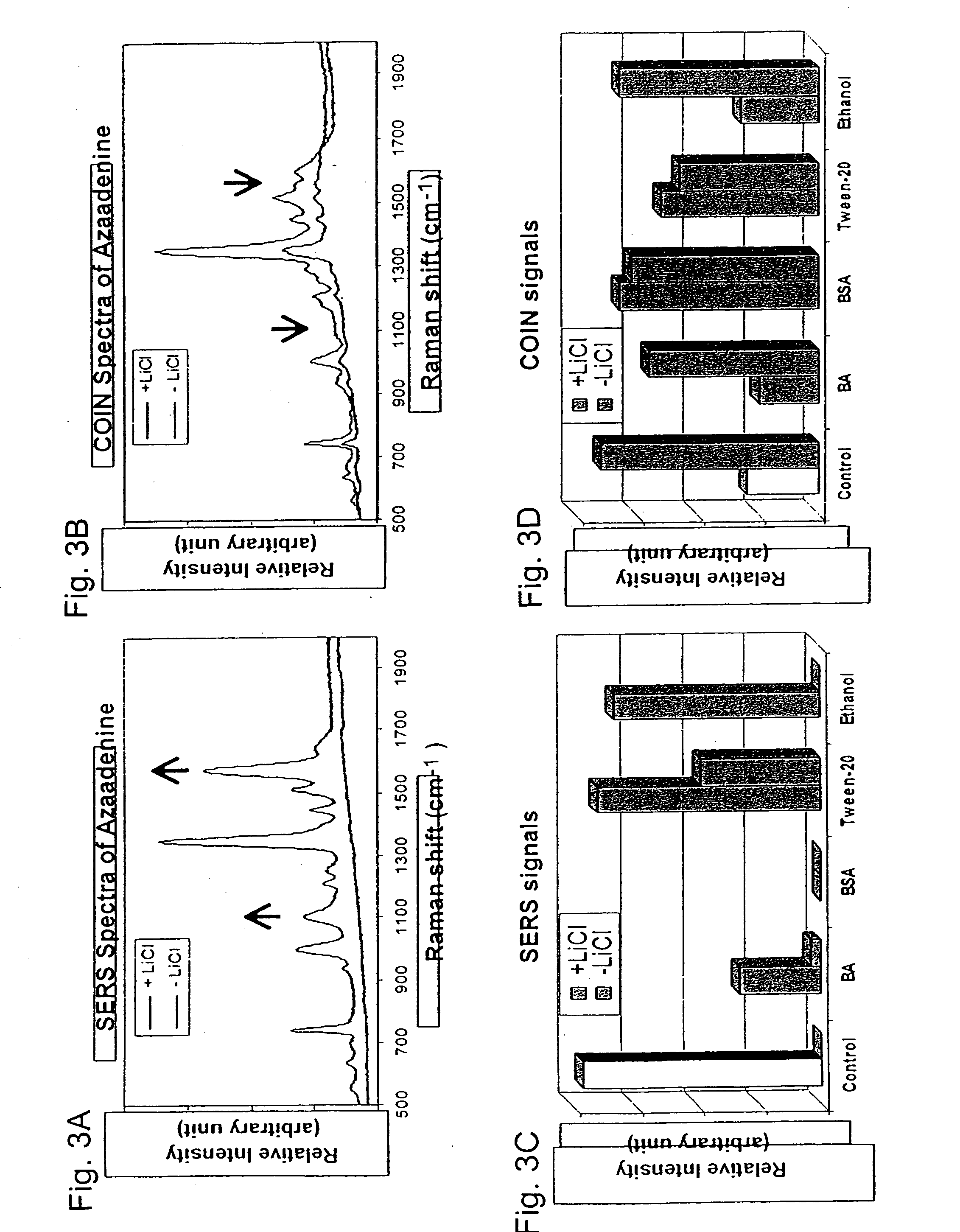Composite organic-inorganic nanoclusters
- Summary
- Abstract
- Description
- Claims
- Application Information
AI Technical Summary
Problems solved by technology
Method used
Image
Examples
example 1
General Considerations
[0104] Chemical reagents: Biological reagents including anti-IL-2 and anti-IL-8 antibodies were purchased from BD Biosciences Inc. The capture antibodies were monoclonal antibodies generated from mouse, and the detection antibodies were polyclonal antibodies generated from mouse and conjugated with biotin. Liquid salt solutions and buffers were purchased from Ambion, Inc. (Austin, Tex., USA), which includes 5 M NaCl, 10×PBS (1×PBS 137 mM NaCl, 2.7 mM KCl, 8 mM Na2HPO4, and 2 mM KH2PO4, pH 7.4). Unless otherwise indicated, all other chemicals were purchased, at highest available quality, from Sigma Aldrich Chemical Company (St. Louis, Mo., USA). Deionized water used for experiments had a resistance of 18.2×106 Ohms-cm that was obtained with a water purification unit (Nanopure Infinity, Barnstead, USA).
[0105] Silver seed particle synthesis: Stock solutions (0.50 M) of silver nitrate (AgNO3) and sodium citrate (Na3Citrate) were filtered twice through 0.2 micron...
example 2
[0120] COIN synthesis and analysis. Silver colloidal solution (50 mL) with average particle diameter of 12 nm was made from 2 mM AgNO3, 0.3 mM NaBH4 and supplemented with 4 mM Na3Citrate. The solution was heated to boil before 8-aza-adenine (AA) was added to final 20 μM. After 5 min. of boiling, additional 0.5 mM AgNO3 was added. The temperature was then lowered and maintained at 95+1° C. Aliquots (1 mL each) of the solution were retrieved at indicated time intervals for spectral measurements after 1:30 dilution with 1 mM sodium citrate. As shown in FIG. 2A, absorption spectra of retrieved sample aliquots, showed peak shifts and increased absorption at higher wavelengths (>450 nm). At time intervals (small arrows indicate positions where absorption changes were further analyzed) retrieved sample aliquots (each 50 μl, placed in a Petri-dish over a white light box), were photographed and showed time dependent-color changes with reaction heating time. Absorbance and Raman activity as a...
example 3
[0121] Organic compound-induced metal particle aggregation: Using metal particles prepared as described herein (gold of 15 nm, Abs520 nm=0.37; silver of 60 nm, Abs420 nm=0.3) in 1 mM Na3Citrate; each organic compound (see key to abbreviations in Table 1) was mixed with a sample of a metal colloid solution at indicated concentrations for 10 min. before spectral measurement. For each sample, the absorbance of the main peak was used as the Peak 1 value and the increased absorbance at a higher wavelength (600 nm-700 nm) was used as the Peak 2 value; the ratios of Peak 2 / Peak 1 were plotted against concentrations of the organic compound; a high value of the ratio indicating a high degree of metal particle aggregation. FIG. 6A shows aggregation of gold particles induced by organic compounds. Relatively low concentrations of organic compounds were sufficient to cause aggregation of silver particles. As shown in FIG. 6B, comparatively high concentrations of organic compounds were required t...
PUM
| Property | Measurement | Unit |
|---|---|---|
| Diameter | aaaaa | aaaaa |
| Diameter | aaaaa | aaaaa |
| Diameter | aaaaa | aaaaa |
Abstract
Description
Claims
Application Information
 Login to View More
Login to View More - R&D
- Intellectual Property
- Life Sciences
- Materials
- Tech Scout
- Unparalleled Data Quality
- Higher Quality Content
- 60% Fewer Hallucinations
Browse by: Latest US Patents, China's latest patents, Technical Efficacy Thesaurus, Application Domain, Technology Topic, Popular Technical Reports.
© 2025 PatSnap. All rights reserved.Legal|Privacy policy|Modern Slavery Act Transparency Statement|Sitemap|About US| Contact US: help@patsnap.com



